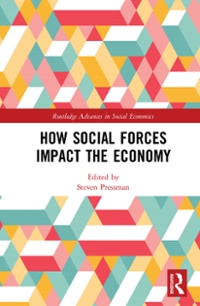Table 5.1: Output Growth and Inflation Forecasts(a) Per cent Year-ended Dec 2019 Jun 2020 Dec 2020 Jun 2021 Dec 2021 Jun 2022 GDP growth 2 2 23/4 3 3 3 (previous) (21/4) (21/2) (23/4) (3) (3) (n/a) Unemployment rate(b) 5.2 51/4 5 5 43/4 43/4 (previous) (51/4) (51/4) (51/4) (5) (5) (n/a) CPI inflation 1.8 13/4 13/4 13/4 2 2 (previous) (13/4) (2) (13/4 ) (13/4) (2) (n/a) Trimmed mean inflation 1.6 13/4 13/4 13/4 2 2 (previous) (11/2) (13/4 ) (13/4 ) (13/4) (2) (n/a) Year-average 2019 2019/20 2020 2020/21 2021 2021/22 GDP growth 13/4 2 21/4 23/4 3 3 (previous) (13/4) (21/4) (23/4) (23/4) (3) (n/a) (a) Technical assumptions include the cash rate moving in line with market pricing, TWI at 58, A$ at US$0.67 and Brent crude oil price at US$54 per barrel; shaded regions are historical data; figures in parentheses show the corresponding forecasts in the November 2019 Statement on Monetary Policy (b) Average rate in the quarter Sources: ABS; RBATable 6.1: Output Growth and Inflation Baseline Forecasts(a),(b) Per cent Year-ended Jun 2020 Dec 2020 Jun 2021 Dec 2021 Jun 2022 Dec 2022 GDP growth -6 -6 4 5 4 4 (previous) (-8) (-6) (7) (6) (5) (n/a) Unemployment rate() 7.0 10 9 81/2 71/2 7 (previous) (10) (9) (81/2) (71/2) (61/2) (n/a) CPI inflation -0.3 1 1/4 3 1 1 1/4 11/2 (previous) (-1) (1/4) (23/4) (11/4) (11/2) (n/a) Trimmed mean inflation 1.2 1 1 1/4 1 1 1/4 11/2 (previous) (11/2) (11/4) (11/4) (11/4) (11/2) (n/a) Year-average 2019/20 2020 2020/21 2021 2021/22 2022 GDP growth 0 -4 -3 2 5 4 (previous) (-1) (-5) (-3) (4) (6) (n/a) (a) Forecast assumptions (May Statement in parenthesis): TWI at 61 (57), A$ at US$0.72 (US$0.64), Brent crude oil price at US$46/bbl (US$35/bbl); the cash rate remains at its current level and other elements of the Bank's monetary stimulus package, including the 0.25 per cent target for the 3-year Australian Government bond yield, are assumed to remain unchanged. (b) Rounding varies: GDP growth to the nearest whole number; unemployment rate to the nearest half point; inflation rates to the nearest quarter point. Shaded regions are historical data. Figures in parentheses show the corresponding baseline scenario forecasts in the May 2020 Statement. (c) Average rate in the quarterFiscal policy is implement x G A federal budget deficit x /SV_2ajBbhHxTPH916R Q29 A federal budget deficit O occurs when government expenditures exceed tax revenues. O occurs when tax revenues exceed government expenditures. O occurs when transfer payments exceed tax revenues. will always result when Congress and the president cannot agree on expenditures. O occurs when monetary policy works in the opposite direction of fiscal policy. Q30. Suppose Congress decreases income taxes. This is an example of O expansionary fiscal policy. O expansionary monetary policy. O contractionary fiscal policy. O contractionary monetary policy. Q31. Expansionary fiscal policy actions include government spending and/or taxes, while contractionary fiscal policy actions include government spending and/or taxes. O increasing, increasing; decreasing; decreasing O decreasing; decreasing; increasing, increasing O increasing; decreasing; increasing; decreasing O decreasing; increasing, increasing, decreasing O increasing; decreasing; decreasing; increasing Q32.11) Estate and gift taxes account for a very small portion of total tax revenues collected by the federal government because taxes are levied only on large estates.+ 12) Taxation and government spending are examples of fiscal policy tools used to stabilize an economy.+ 13) Net interest payments made by the government depend on the total federal debt held and on the level of interest rates.+ An outside lag is the time period it takes economists to formulate a stabilization policy.+ 14) 15) Because the government has so much money, and can print more, it does not need to borrow and therefore rarely pays net interest on debt.+ 16) When federal government spending amounts to less than tax revenues, the federal government runs a budget deficit.+ Fiscal actions to eliminate a recession are likely to decrease the federal budget deficit.+ 17) Social insurance taxes are paid by corporations based on their profits.+ 18) Unlike social insurance taxes, income taxes are paid on wages only.+ 19) Transfer payments are excluded from GDP.+ 20) 2+










